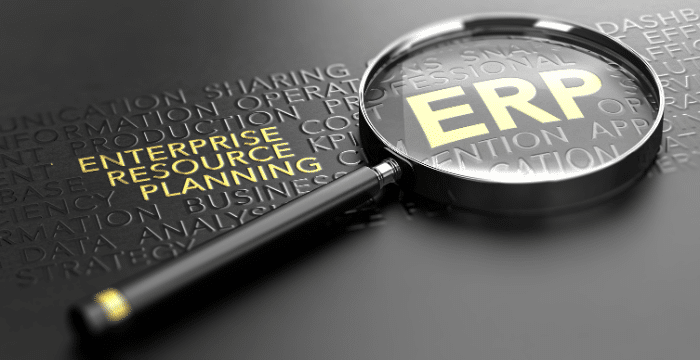The Ultimate Guide to Choosing Project Management Software

Table of Contents
Project Management Software In the dynamic world of business, managing projects efficiently is paramount. As organizations juggle numerous tasks, deadlines, and teams, the necessity for a robust Project Management Software becomes evident. This guide will walk you through everything you need to know to make an informed choice, ensuring your projects run smoothly and successfully.

Understanding Project Management Software
Before delving into how to choose the right software, it’s essential to understand what Project Management Software is and why it’s indispensable. Essentially, it is a suite of tools designed to assist in planning, organizing, and managing resource tools, developing resource estimates, and providing a platform for seamless communication and collaboration among project stakeholders.
These tools streamline workflows, enhance productivity, and ensure that every project phase, from initiation to closure, is handled with utmost precision. From startups to large enterprises, having an effective Project Management Software can be a game-changer.
Key Features to Look For
When selecting a Project Management Software, certain features are non-negotiable. Here’s a rundown of must-have functionalities:
Task Management
Effective task management is the backbone of any project. The software should allow you to create, assign, and track tasks effortlessly. Look for features like task dependencies, subtasks, and milestones. The ability to visualize tasks using Gantt charts or Kanban boards can significantly enhance your team’s productivity.
Collaboration Tools
In the age of remote work and global teams, collaboration tools are crucial. The software should provide a platform for team members to communicate, share documents, and collaborate in real-time. Integration with other communication tools like Slack or Microsoft Teams is a plus.
Time Tracking
Accurate time tracking ensures that projects stay on schedule and within budget. Look for a Project Management Software that offers built-in time tracking features. This allows team members to log their hours and managers to monitor progress and productivity.
Resource Management
Efficient resource management is vital for balancing workloads and optimizing the use of resources. The software should provide a clear view of resource allocation and availability, helping you prevent bottlenecks and burnout.
Reporting and Analytics
Data-driven decision-making is the key to successful project management. Choose software that offers robust reporting and analytics tools. These should provide insights into project performance, team productivity, and budget adherence, helping you make informed decisions.
Customizability
Every organization has unique needs, and your Project Management Software should be adaptable to them. Look for software that allows customization in terms of workflows, templates, and user permissions. This flexibility ensures that the tool can grow with your organization.
Evaluating Different Types of Project Management Software
With a plethora of options available, it’s essential to categorize the types of Project Management Software to find the one that best fits your needs.
On-Premise Software
On-premise solutions are installed locally on your company’s servers. They offer high levels of control and security, making them ideal for organizations with stringent data privacy requirements. However, they require significant upfront investment and ongoing maintenance.
Cloud-Based Software
Cloud-based solutions are hosted on the vendor’s servers and accessed via the internet. They offer flexibility, scalability, and lower upfront costs. Additionally, they facilitate remote access, making them suitable for distributed teams. The main concern with cloud-based software is data security, so ensure the vendor follows stringent security protocols.
Open-Source Software
Open-source Project Management Software provides the freedom to customize the tool according to your needs. These solutions are cost-effective and highly adaptable. However, they require a certain level of technical expertise to set up and maintain.
Integrated Software Suites
Integrated suites offer a comprehensive solution that combines project management with other business processes like CRM, ERP, and HRM. They provide a unified platform for managing all aspects of your business. While they offer extensive functionality, they can be complex to implement and may come with a higher price tag.
Steps to Choose the Right Project Management Software
Choosing the right Project Management Software is a multi-step process. Here’s a structured approach to help you make the best decision:
1. Identify Your Needs
Start by identifying your organization’s specific needs. Consider the size of your team, the complexity of your projects, and your budget. Determine which features are essential and which are nice-to-have. This will help you narrow down your options.
2. Research and Shortlist
Conduct thorough research to identify potential software options. Read reviews, compare features, and check out user testimonials. Create a shortlist of software that meets your criteria.
3. Request Demos and Trials
Once you have a shortlist, request demos and free trials. This hands-on experience will give you a better understanding of the software’s usability and functionality. Involve your team in the trial process to get their feedback.
4. Evaluate User Experience
The software should be user-friendly and intuitive. Evaluate the user interface, ease of navigation, and the quality of customer support. A tool that is difficult to use will hinder productivity rather than enhance it.
5. Check for Integration Capabilities
Ensure that the Project Management Software integrates seamlessly with your existing tools and systems. This includes email, calendars, document management systems, and other business applications. Integration capabilities can significantly enhance workflow efficiency.
6. Consider Scalability
Choose software that can grow with your organization. As your team expands and projects become more complex, your Project Management Software should be able to scale accordingly. This avoids the need for frequent migrations to new tools.
7. Assess Security Measures
Data security is paramount. Ensure the software adheres to industry-standard security protocols. Look for features like data encryption, regular backups, and compliance with regulations like GDPR or HIPAA, depending on your industry.
8. Analyze Cost
Consider both the upfront and long-term costs. While some tools may seem affordable initially, additional costs for add-ons, integrations, or scaling can add up. Ensure you understand the pricing structure and choose software that offers the best value for your investment.
Popular Project Management Software Options
Here’s a look at some popular Project Management Software options, each with its unique strengths:
Asana
Asana is known for its user-friendly interface and robust task management features. It offers a variety of views, including lists, boards, and calendars, making it easy to track progress. Asana also provides excellent integration capabilities with other tools.
Trello
Trello is a favorite for its simplicity and visual appeal. Using a Kanban-style board, it allows teams to manage tasks with ease. Trello is highly customizable with a range of power-ups to enhance its functionality.
Monday.com
Monday.com offers a flexible platform that can be customized to suit various workflows. Its visually intuitive interface and automation capabilities make it a powerful tool for managing complex projects.
Microsoft Project
Microsoft Project is a comprehensive tool designed for experienced project managers. It offers advanced features like Gantt charts, resource management, and detailed reporting. It integrates seamlessly with other Microsoft Office tools.
Jira
Jira is a go-to tool for software development teams. It provides robust issue tracking and agile project management features. Jira’s extensive customization options and integration with development tools make it a powerful choice for tech teams.
Best Practices for Implementing Project Management Software
Implementing a new Project Management Software requires careful planning and execution. Here are some best practices to ensure a smooth transition:
Provide Adequate Training
Invest time in training your team on how to use the new software. This includes initial onboarding sessions and ongoing training to ensure everyone is comfortable with the tool.
Customize to Fit Your Workflow
Customize the software to align with your existing workflows and processes. This includes setting up templates, defining user roles, and configuring settings to match your organizational needs.
Encourage Adoption
Promote the use of the software by highlighting its benefits. Encourage team members to utilize the tool for all project-related tasks and communications. Regularly share success stories and productivity improvements to reinforce its value.
Monitor and Optimize
Continuously monitor the software’s performance and gather feedback from users. Use this feedback to make necessary adjustments and optimizations. Regularly review and update your workflows to ensure they remain efficient.
Ensure Regular Updates
Keep the software updated to benefit from new features and security enhancements. Stay informed about the latest updates and releases from the vendor and implement them promptly.
Project Management Software
Choosing the right Project Management Software can revolutionize the way your team works. By understanding your needs, evaluating options thoroughly, and implementing best practices, you can select a tool that enhances productivity, fosters collaboration, and drives project success. With the right software in place, managing projects becomes a streamlined and efficient process, paving the way for organizational growth and success.







